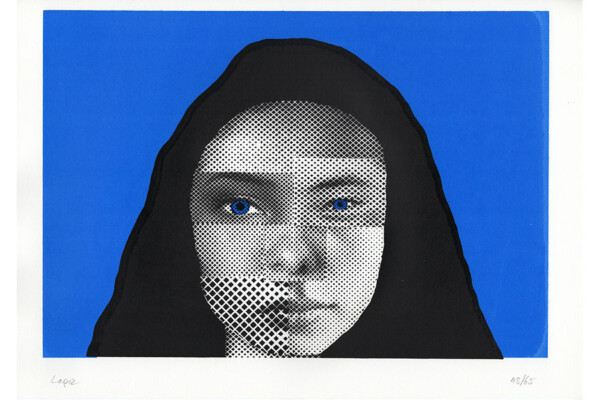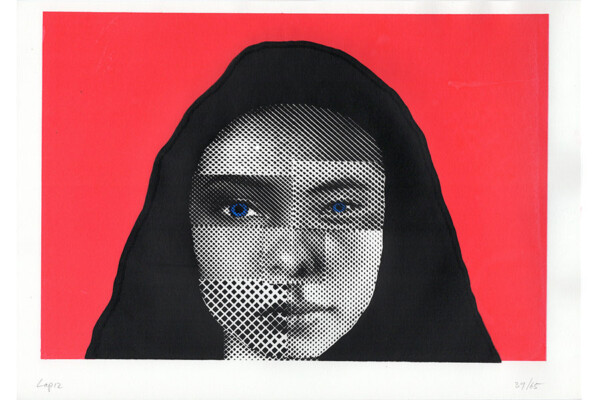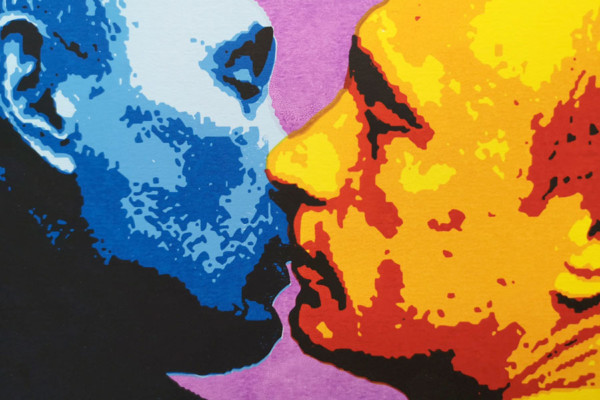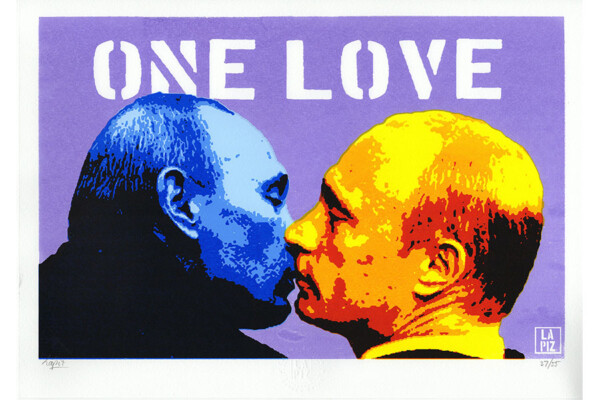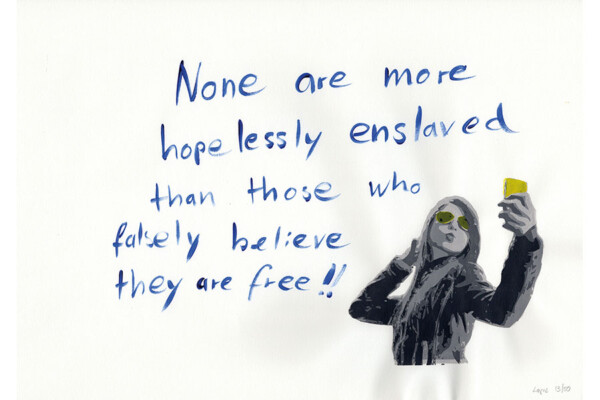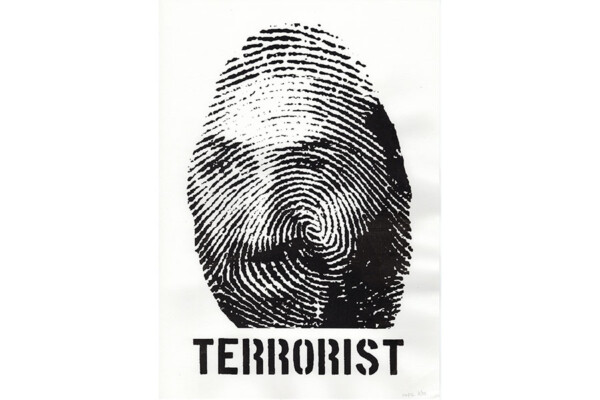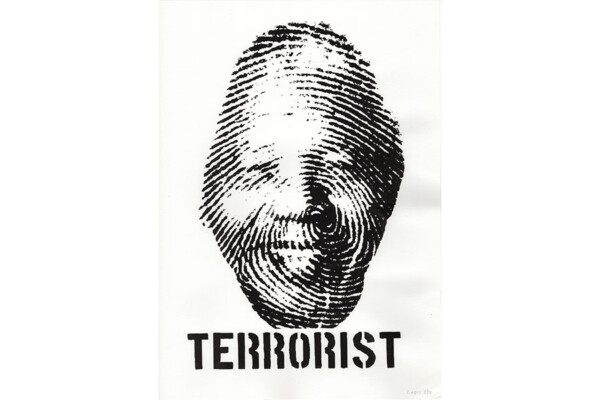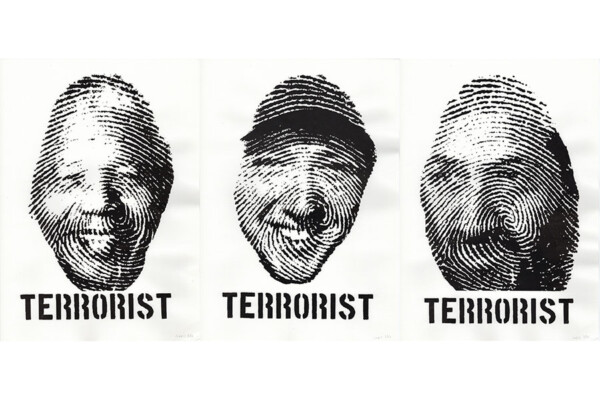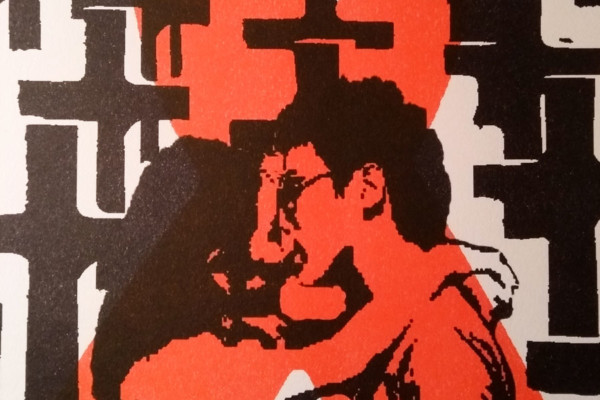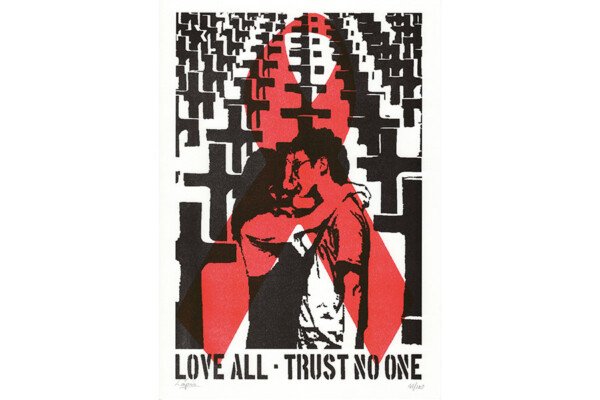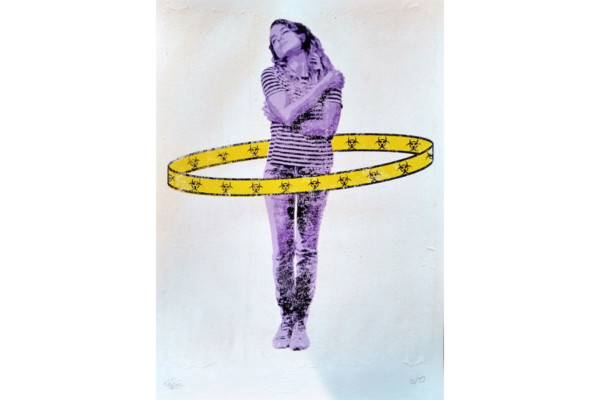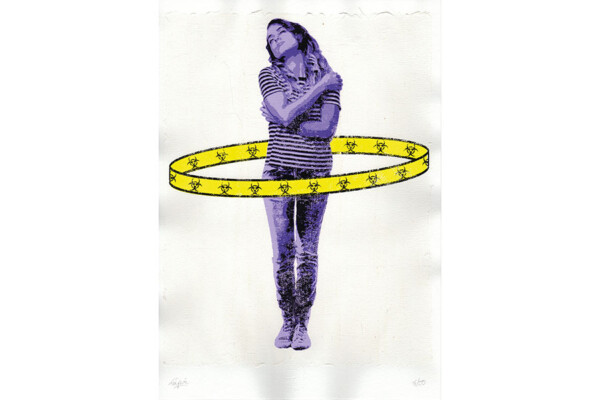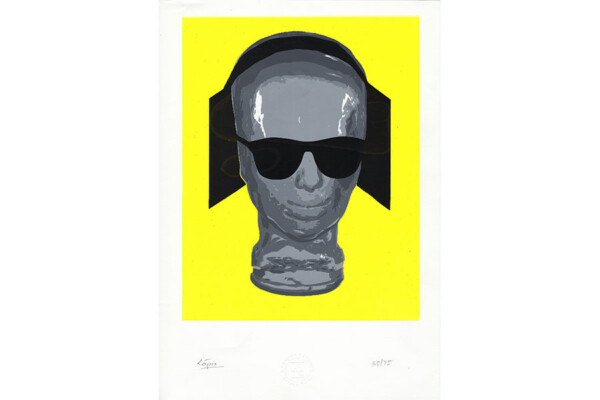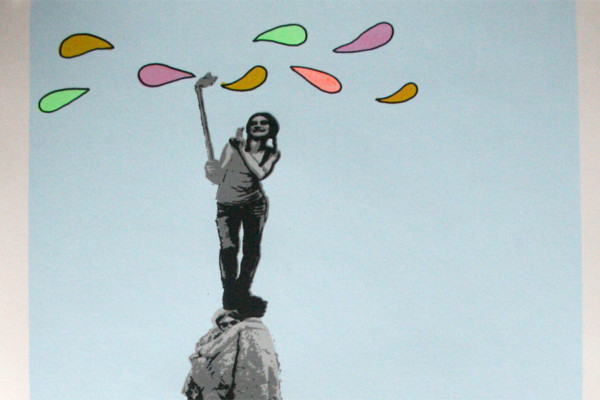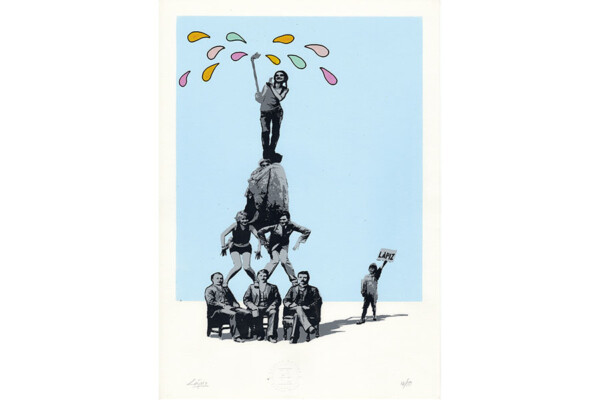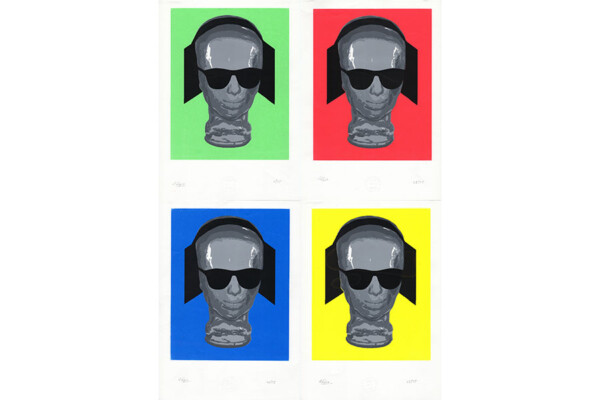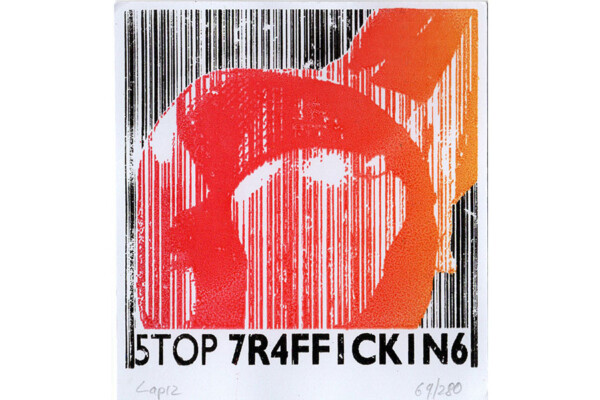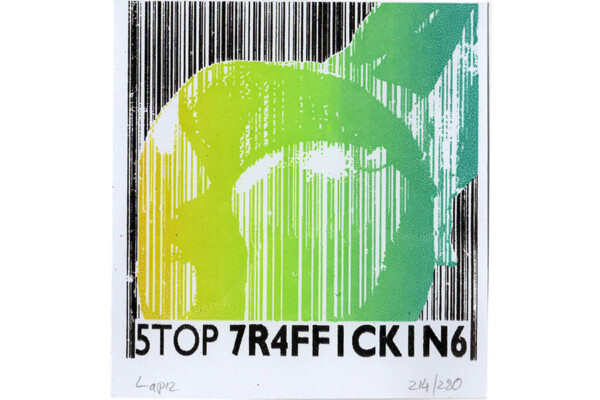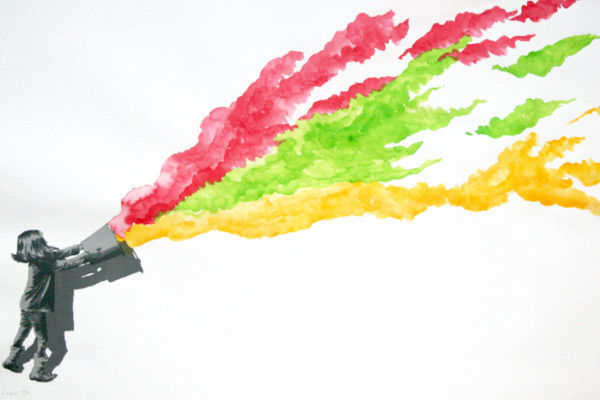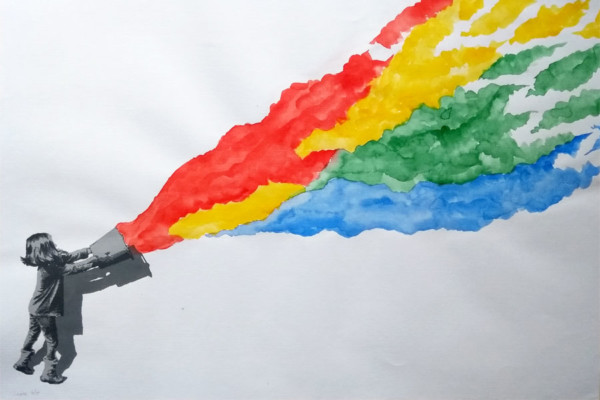The painting is a combination of 7 different woman's faces. The women origin from all parts of the world: Polynesia, Asia, Africa, East Europe, Latin America, Middle East.
Two interesting scientific facts were the inspiration for this motive. On the one hand, a book by Brian Sykes called "The 7 daughters of Eve" in which he describes that all people currently living in Europe can map to only 7 common female ancestors. That means that instead of looking at the different countries and borders in Europe one can put these people together into only a handful of different families. Instead of dividing each other into “us” and “them”, we all merge into a big group of distantly related cousins. Furthermore, Sykes explained that these 7 daughters have also one common ancestor which he calls the mitochondrial Eve (as mitochondrial DNA mapping was used to investigate relationships). The more distant we look, it becomes obvious that every single living person today has one common ancestor shared with the people of all different parts of the world.
Another interesting fact is a study conducted by the University of Copenhagen which revealed that all people who have blue eyes share a common ancestor which lived some 6.000-10.000 years ago. They figured this out by looking at the genetic mutation causing blue eyes and discovered that it was identical in all of their investigated subjects. This means that blue-eyed people from Northern Europe are related to blue-eyed people in China, Africa, and the Americas etc.
The idea of the painting therefore is to show that we are all related, even if we look different because of the colour of our skin, the shape of our eyes or the language that we speak, we are closer to each other than we think making a self-identification based on borders and countries obsolete.
Details:- silk screen print on 190 g/sm paper
- 42 x 30 cm
- limited edition of 65 copies; signed and numbered

